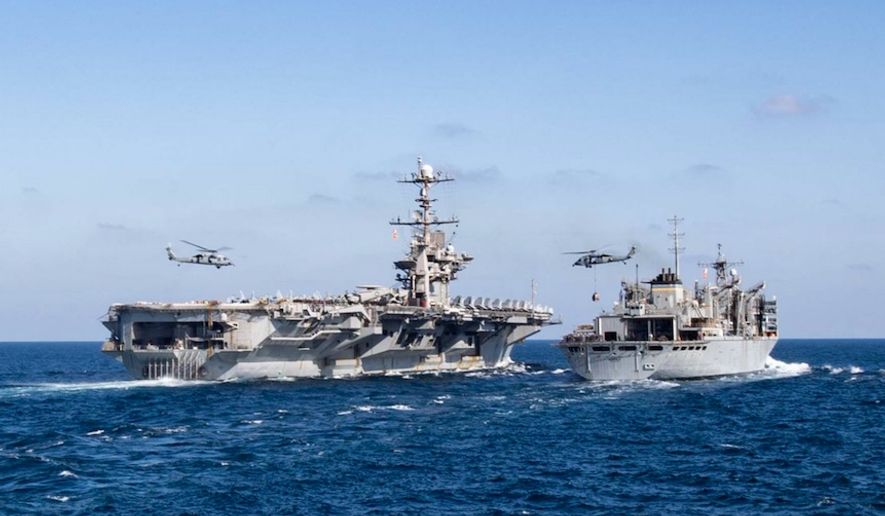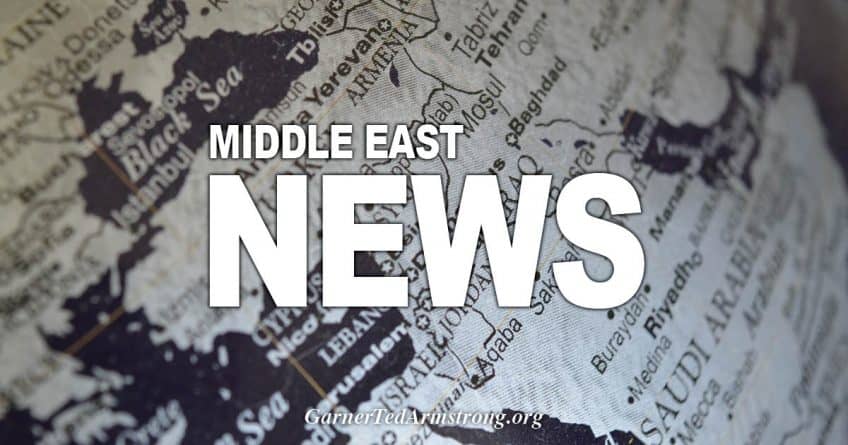
“U.S. Central Command is well postured to defend our forces around the region and to respond to any further aggression against our forces,” the combatant command tweeted March 13, 2020. The remark comes in conjunction with the USS Dwight D. Eisenhower and the USS Harry S. Truman conduct operations in the Middle East. (Image: Twitter, U.S. Central Command)
U.S. Central Command closed out the week by sending a strong message to Iran regarding the “enormous” firepower of nearby carriers the USS Dwight D. Eisenhower and the USS Harry S. Truman.
The recent killing of U.S. Army Spc. Juan Miguel Mendez Covarrubias, U.S. Air Force Staff Sgt. Marshal D. Roberts, and British Army Reservist Lance Cpl. Brodie Gillon by Iran-backed Kata’ib Hezbollah appears to have partly prompted the first dual-use of carriers in the region since 2012.
CENTCOM’s official Twitter account put out a direct quote by Gen Frank McKenzie saying, “I would caution Iran and its proxies from attempting a response that would endanger U.S. and coalition forces or our partners.”
A follow-up tweet from the account reiterated: “U.S. Central Command is well postured to defend our forces around the region and to respond to any further aggression against our forces.”
“We’re going to keep them for a while,” the officer said at a Pentagon press briefing Friday, Business Insider first reported. “The beauty of the aircraft carrier is this. It has enormous offensive capabilities, it has enormous defensive capabilities, and it has mobility,” he explained. “The carriers are very important to us, and we know the Iranians watch them very closely too.”
The outlet also quoted former White House national security adviser John Bolton as saying, “[This was done to] send a clear and unmistakable message to the Iranian regime that any attack on United States interests or on those of our allies will be met with unrelenting force.”
Sending both carriers to the region also comes in the wake of January’s killing of Gen. Qassem Soleimani, the head of the Iranian military’s Quds force, by U.S. forces.
President Trump approved the strike, which took place at Baghdad International Airport in Iraq, after an embassy siege that killed the American contractor.
“General Qassem Soleimani has killed or badly wounded thousands of Americans over an extended period of time, and was plotting to kill many more … but got caught,” Mr. Trump tweeted Jan. 3.
The Secretary granted my request to continue to operate two carrier strike groups in the region, which is the first period of extended dual U.S. carrier operations in the U.S. Central Command area of responsibility since April 2012.









